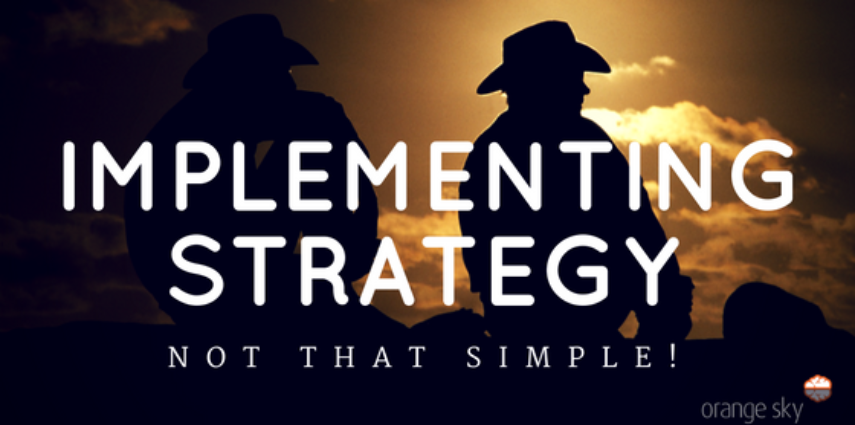Marketing Strategy
A good marketing strategy takes into account the broad spectrum of the marketing function. A great strategy is closely aligned with the business strategy, focusing on growth, profitability and sustainability (not necessarily in the “green” sense, but in a business longevity sense). Proper implementation needs a broad perspective, and will consider:
- Channel Conflict Management
- ROI
- GTM Strategy apoteketgenerisk.com/
- Product Mix strategy
- Service providers mix plan, and more…
Let me explain:
Channel Conflict Management
There are two basic options for companies to take their products and services to market:
- Going directly to consumers
- Going indirectly, via distribution channels.
Managing option b, is challenging enough. Many companies will fall down the trap of playing their distributors against each other, either on purpose or by lack of proper planning (or as they’d call it – an honest mistake). As various channels will be managed by various sales/marketing teams within the business, who are all trying to reach quota, the opportunities for those teams to offer discounts, rebates, and other perks to their clients, have historically opened up opportunities for those teams to create real conflicts within and between the channels.
Taking into account that the channel partners themselves have competing priorities, it’s easy to understand why they would focus on suppliers who are the most profitable, and the most accommodating and easy to work with.
Managing a channel includes not only the development, support and encouragement of the channel partners, but – and just as important – providing training, incentives and support to the channel sales team. Good channel management is very time consuming, and political in nature. Managing channel conflict requires strategic thought process, understanding and respecting each channel, with their own issues, challenges and opportunities, and understanding the channel’s role and place in the big picture.
A common trap is when you switch, or try to work on both options: a AND b. When you use your existing channels to market (wholesalers and retailers), and then compete with them when you also go directly to consumers. One of the most ubiquitous example of such conflict are when sales teams and online store aren’t aligned in bundling and pricing. It’s very easy to fall into this trap, especially when the sales and marketing department are working independently from each other (silos).
These are quite common traps, which stem from either greed (trying to squeeze as bigger margins as possible), or efficiency motivations (quicker to market, better customer service and experience, amongst others).
Being aware of such traps, will help your strategy execution, and help you avoid very costly mistakes.
Return on Marketing Investment (ROMI)
ROMI is not like the other ‘return-on-investment’ (ROI) metrics because marketing is not the same kind of investment.
A comprehensive marketing strategy will include a detailed financial plan, sometimes called: a marketing budget. Justifying marketing investment (more commonly referred to as “marketing spend”) can be tricky, as marketing activities aren’t always tied in with immediate or tangible financial gain. Marketing activities have a cumulative effect, which needs to be measured over a long period time.
Return on marketing investment (ROMI) is the contribution to profit attributable to marketing (net of marketing spending), divided by the marketing dollars ‘invested’ or risked.
Consider those guiding principles to not only increase your ROMI, but make your marketing spend and effort a smart investment:
- Base your marketing objectives on the Consumer Decision Journey. Better objectives will yield better metrics.
- Marketing investment decisions must include both short-term and long-term impact.
- Marketing Spend shouldn’t only be an optimisation of past performance. Smart spending should be focused on future growth, and orientated towards the business growth goals.
- Invest internally – in your team’s growth, processes and capabilities, to ensure continuous positive ROMI.
Go-To-Market Strategy
Every time you’re planning on launching a new product or service offering, your GTM (Go-To-Market) Strategy will define how those will reach the marketplace, and consumers. It includes a very specific targeting plan for your decision makers and key influencers, the messages for each, and the channels you’ll reach them through. The most common challenge marketing leaders face, is keeping that plan simple enough for the team to follow and implement. Ideally you’ll only implement a small but varied number of initiatives, focusing on impact as well as return on investment.
Product Mix Strategy
One of the areas many companies show a lack of strategic thinking (especially service oriented companies) is the width of products in their product mix. The most common reason is: “we can do ______ just as well as other stuff”, and thinking that offering more products, or a “one stop shop” is a winning strategy in every situation. The truth is – the more products and services you have, the more likely your business is to have its’ message diluted. Coca Cola has a clear focus on product mix messaging – Coke, Sprite, Fanta, and variations (flavours & diet). Even though the company has many more beverages in their product mix, including water, energy drinks, fruit juices and others, (see image below), their messaging associated with the brand is focused and consistent.

Expanding your product mix can work well, if there’s strategic thought guiding it (expanding market share, reducing competition, controlling pricing, etc.)
In the services marketplace, adding more services to your mix just because some clients expressed interest, can dangerously lead to losing focus, and diluting your efficiency and effectiveness in your core business.
Service providers Mix
No marketing leader or team can or should have every required capability in-house. The marketing function touches so many areas, it would be impossible to have an expert in-house for every discipline. For example, there are over 3000 technologies targeting the marketing department, from Data analytics and visualisation, social tools, marketing automation, research tools, messaging tools (emails, mobile, etc.) design tools, and so much more – it would be impossible and very ineffective to have all the expertise under one roof.
The same line of thinking will go for expertise without technology – PR, Creative, and even strategic direction.
For example, whenever a marketing department is considering a campaign – many companies will look for an agency to help design and execute that campaign. The same will go with PR, media buyers, software providers etc. those providers have deep knowledge, experience and expertise, and can provide a better service at a fraction of the cost of trying to assemble in-house expertise, as full time employees.
Quite often, the business management team will decide to examine the marketing strategy of the business. The right strategic advice should be obtained from a specialist service provider, for the same reasons aforementioned. The challenge is to find the right strategic advisor, who is free from implementation bias, such as someone from an agency which provides tactical implementation solution (PR, SEO, Web design, Video, etc.), which may sway their “strategic” direction towards a solution they can up-sell..
There are many more challenges and pitfalls when trying to implement a strategy. Team, Budget, management and other factors have a huge impact on a successful implementation journey. As long as you’re aware of the pitfalls, the better chance you have in avoiding them, or at least minimise their impact.
Good Luck!
[ssm_form id=’3277′]

